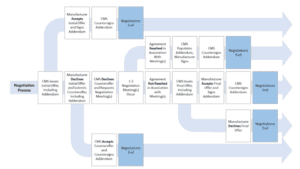What role can insurance play in offsetting emissions?

Authored by AXA XL
Companies of all types are seeking to manage their carbon emissions as part of the fight against climate change. One way in which many are doing this as part of a wider, long-term strategy to reduce their carbon footprints and use new energy sources, is by offsetting carbon emissions that are more challenging to reduce. Andy Rumens, an underwriter in AXA XL’s general aviation and aerospace team, and Nathalie Thong, ESG analyst for UK & Lloyd’s, explain how underwriters are thinking dynamically about the ways in which insurance can play a part.
The need to combat climate change is at the forefront of the minds of companies, their investors, employees, customers and other stakeholders. And setting, achieving and reframing Environmental Social & Governance (ESG) plans has become a key part of the strategy of companies large and small, across all sectors and geographies.
As part of this effort, companies are working hard to meet carbon emission reduction targets set at international, national and company-level, as societies move towards the 2050 Net-Zero goal that has been adopted by most developed economies across the globe.
One of the mechanisms available to help companies meet their carbon reduction targets is carbon offsetting and emissions trading via the compliance – or regulatory – carbon market, whereby companies in certain energy-intensive industries are legally obliged to monitor and reduce their carbon emissions and are held accountable by regulatory bodies. Article 6 of the Paris Agreement on Climate Change allows parties to use international trading of emissions allowances to help them achieve their emissions targets. It also establishes a framework with robust accounting rules and a market structure to enable them to do so.
There is also a voluntary market for carbon offsets, in which companies or individuals can buy carbon credits to help them meet carbon management targets or to offset personal emissions associated with travel, for example. These credits are not intended to be traded; their purpose is to enable the purchaser to offset and reduce overall emissions. Voluntary credits are often tied to projects like planting trees or the capture and storage of CO2, for example.
The Voluntary Carbon Market
The voluntary market has been growing in importance and relevance as companies and individuals seek ways to meet their environmental targets and reduce their carbon footprints.
The issuance and exchange of voluntary carbon credits are not governed by a single global standard but instead by several standards and protocols specifically designed for the projects and innovations in this growing area. Companies, Non-Governmental Organisations (NGOs) and individuals design and develop carbon projects that reduce emissions or extract and store CO2, for example, which then enable carbon credits to be created. These project developers can then sell their credits via carbon credit platforms which act as a broker between project developers and companies/individuals who want to buy carbon credits.
The voluntary market is not new; indeed, it’s been around for about 20 years, but it is poised to become more mainstream in the coming years as companies seek more ways to meet their carbon management targets. According to research by McKinsey, the value of the global voluntary offsetting market will likely reach US$50 billion by 2030.
What role can insurance play?
As a global insurance company, we’re focused on finding ways to not only reduce our own carbon footprint but also to enhance our products and solutions so that they can help our clients to meet their obligations and goals.
Drawing upon expertise from across the AXA Group, which includes climate specialists, risk engineers and, of course, underwriting experts, we’ve been exploring ways in which the established principles of insurance indemnity could help clients to reach their ESG targets.
Last year, AXA Investment Managers acquired a carbon credit platform, ClimateSeed, which connects businesses seeking to offset their carbon emissions with carbon credits. This is part of AXA’s overall strategy to play a part in addressing climate change and also gives us deeper insight into this new area of business.
If you think about insurance, we believe that there are ways we can design indemnity triggers that will protect clients and enable them to fulfil emissions target goals when something out of their control goes wrong. Take the hypothetical example of a shipping company that had a vessel travelling in the Suez Canal in 2021 when the container ship, Ever Given, ran aground blocking the canal. That vessel may have been forced to take a long detour to avoid being stuck in the canal. That detour, however, may have resulted in the vessel exceeding its emission target – because of an external event. We believe that it would be possible to design an indemnity that would enable clients to purchase additional carbon credits for unexpected events, maintaining their carbon management commitments.
Such solutions would have to be bespoke – this is a nuanced area and a one-size-fits-all approach is not appropriate. Different sectors will have different needs, and individual clients will also have different risk profiles. We understand that carbon offsetting is just the first step, but we believe that helping our clients to take accountability for their emissions – right now – is an essential measure on the journey to Net Zero. We plan to continue working in this space to develop long-term solutions alongside our clients to support greenhouse gas reduction and removal as well as investment in new technology to develop solutions that will enable our clients to meet – and exceed – the ambitious carbon management targets they’ve set, and will need to achieve, to help in the fight against climate change.






